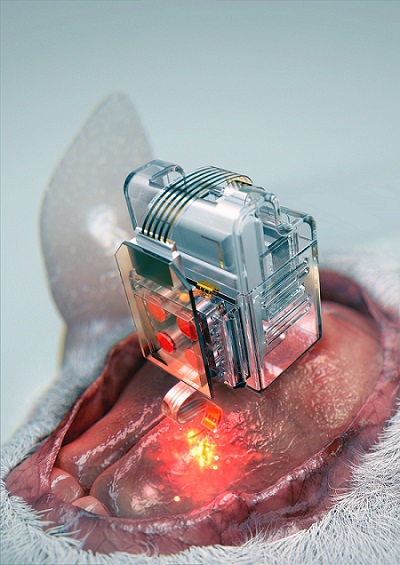Neuralink as a tool to help paralyzed people and a tool to combat evil AI

Elon Musk talks about Neuralink
When Elon Musk first spoke about the neural brain interface of Neuralink, the news spread around the world in a matter of hours. A little later, he said that work on neural interfaces began for the simple reason that Musk himself fears the emergence of a strong form of artificial intelligence that is hostile to man .
And one of the ways to prevent a new enemy from appearing is to allow a person to connect his own brain to a computer system. Those. Do not wait for the appearance of intelligence from the bowels of a computer system, but connect an already existing human brain. By the way, this Musk reported earlier. During the presentation of his project, Musk and his employees talked exclusively about the technical side of the matter, the question of opposing the strong form of AI was not raised. However, the neural interfaces instantly ceased to be fiction and became reality. But what is the future of this project?

Before moving on to forecasts, it is worth paying attention to the plans and announcements of the company itself. So, now Neuralink is committed to improving the connection of the neural interface to the mouse brain. The goal is to learn how to connect the system to the brain through an opening in the skull with a diameter of less than 8 mm. An implant is inserted into this hole, which is connected by electrodes to the brain.
According to the developers, the chip and the entire system will receive energy wirelessly - for this, a special system is used, which is located behind the ear.
In the brain, the chip connects to a series of small connectors that make it possible to connect the electrodes to the desired area. There they will be able to analyze the electrical activity of a neuron. In place of the electrodes will be installed surgically, and the robot surgeon will take up the main work. Its actions are very accurate, so that the vessels will not be damaged, and the operation itself will be quick.

The chip will take readings of brain activity, and then compress the information received, so that it is easier to transfer the packet “out”. Musk says that at the same time it will be possible to install 10 such chips. True, the company began testing with a minimum number of chips. The quieter you go, the further you'll get.
All this can be called a huge step forward in the matter of improving neurointerfaces. But in fact, Neuralink is more than a step forward.
And despite the seeming fantasticness, the current work is an improvement of what is already there. Previously, scientists and doctors implanted electrodes into the brain of both animals and humans, and they managed to count neural activity. In some cases, it even helped to control the operation of the robotic manipulator, which helped a paralyzed person bring a bottle of water to his mouth.
A step forward is, above all, the size of the chip. If you watch the video posted above, it becomes clear that the electronic system that is connected to the patient’s head is very large and aesthetically pleasing. In this case, a rather large hole is made in the skull.
Neuralink does not need all this, the company’s chip is very small. Why all this miniaturization? According to company representatives, they are confident that a person who is immobilized for any reason will want to feel and look normal. Yes, large electrodes make it possible to do something, but it is much better if instead of them a miniature chip works that can cope with most of the tasks set by scientists.
True, a serious miniaturization of the chip is still far away. The animals that connected the chip constantly feel its presence and worry, so the experiment cannot be called clean. If Neuralink succeeds, then the strange appearance of these chips can be forgotten.

Now Neuralink is gradually succeeding. So, the company managed to combine about 1000 electrodes, placing them in a compact package. You can apply the technology in a large number of areas, including medicine. Neuralink plans to secure the right to install a chip in a person’s head, then send the patient home and monitor his behavior. According to Mask, a person with an implant will be able to communicate with others without problems, at least using a mobile phone.

But why does a person need not one, but several implants? The fact is that, according to Mask, different parts of the brain are needed to solve different problems. So, to get a tactile response, one part is needed, in order to move a robot arm - another. A person with physical problems will be able to control himself and the devices around only if several chips are installed in his head at once.

Of course, the success or failure of learning life with a neuro-interface will depend on the area of the brain and on the patient himself. But the activities of different areas of the brain in different people can vary significantly, so when you "fit" the implant, you will need to conduct tests. The problem is that in the same place, different people can have a different number of neurons with a different connection structure. Probably, in order to learn how to use the device, you will need to undergo training, and in the future, the chip and the patient will adapt to each other.
Of course, such chips will help patients with various health problems to live. But do not forget that the idea of Elon Mask, as far as it can be understood, is to connect a person to a PC in order to avoid the appearance of a hostile AI. Well, if a hostile AI does not appear, then the carriers of the electrodes will be able to enjoy virtual control over the mouse and keyboard. According to experts, high throughput neural interfaces should enable the development of a large number of new therapeutic possibilities.
All Articles